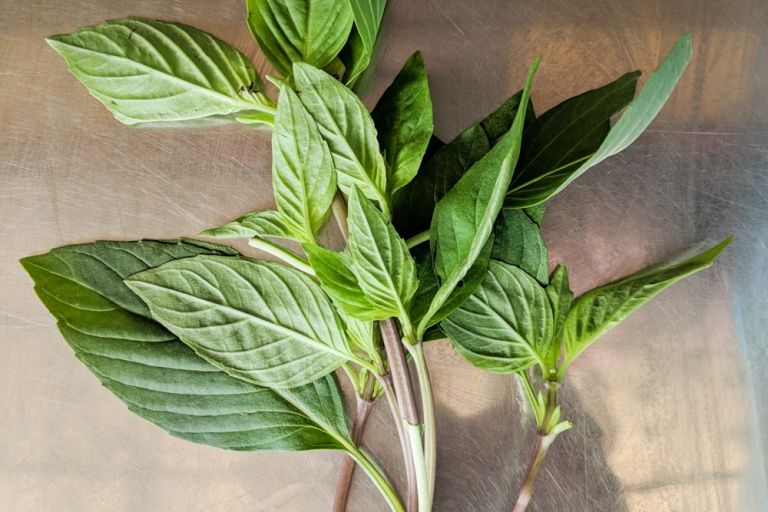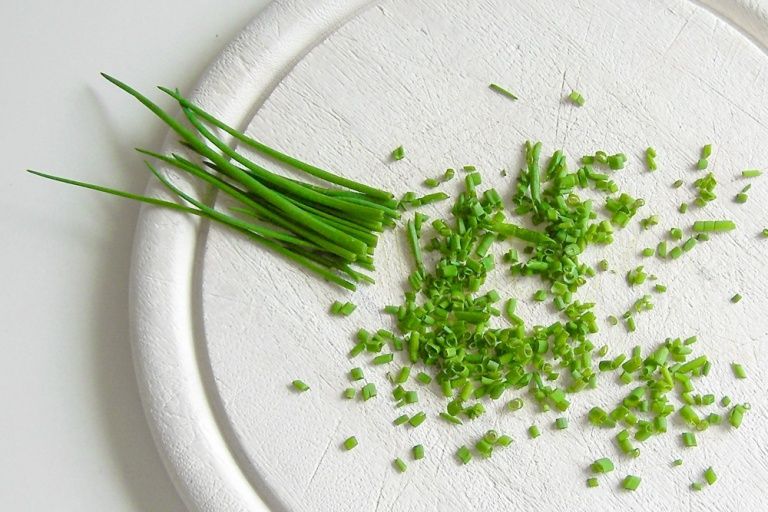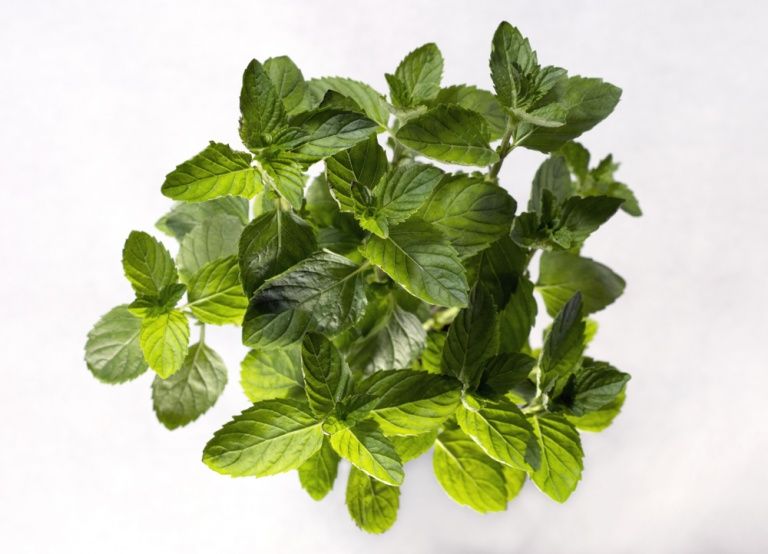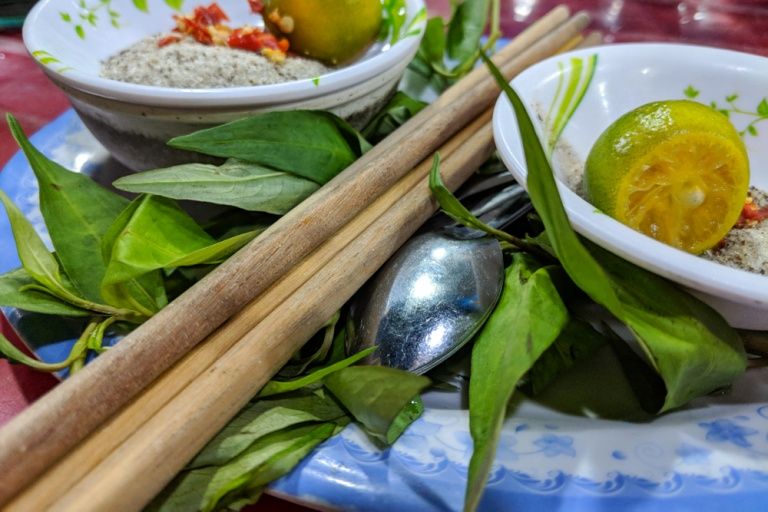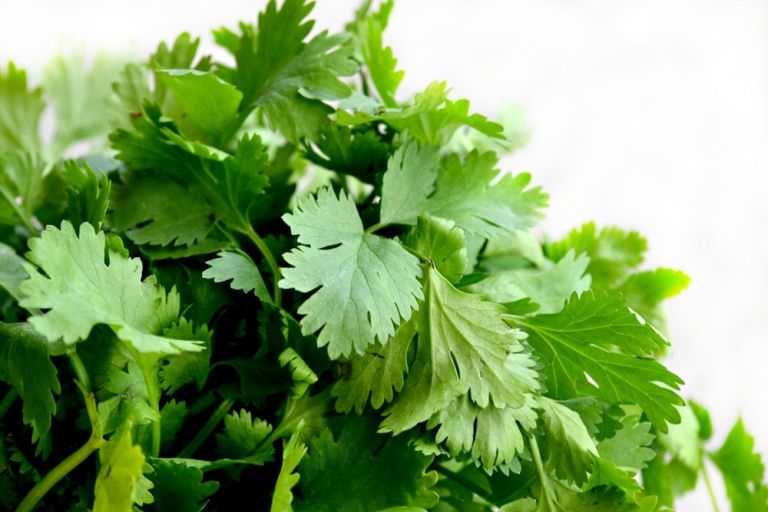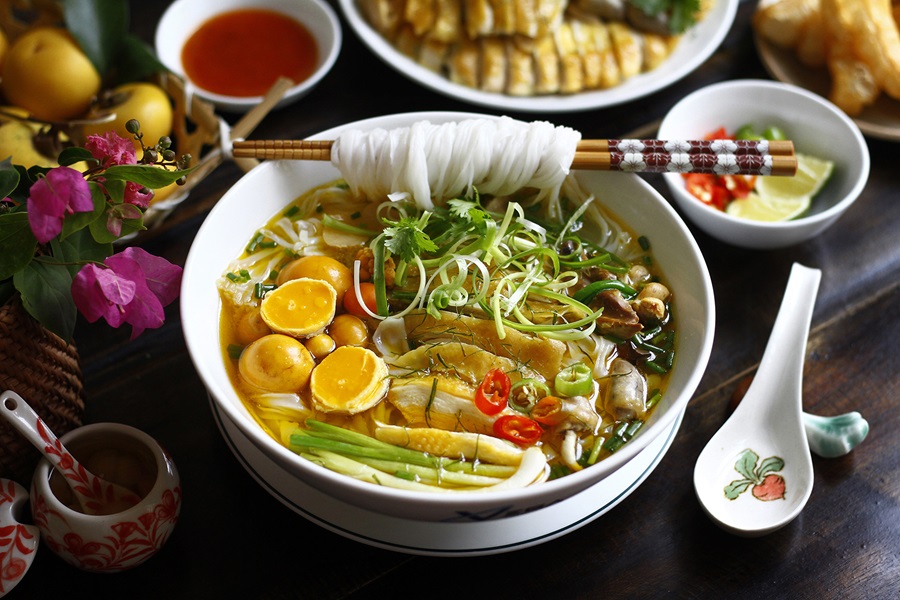MỤC LỤC NỘI DUNG
- 1 Essential Vietnamese Herbs You Should Know
- 1.1 Dill (Rau thì là)
- 1.2 Thai Basil (Húng quế)
- 1.3 Betel Leaves (Lá lốt)
- 1.4 Chinese Chives (Hẹ)
- 1.5 Lemongrass (Sả)
- 1.6 Coriander – Rau Mùi (North), Rau Ngò (South)
- 1.7 Sawtooth Coriander (Ngò Gai)
- 1.8 Vietnamese Coriander (Rau Răm)
- 1.9 Vietnamese Mint (Húng lủi)
- 1.10 Fish Mint – Diếp Cá
- 1.11 Red Perilla / Shiso – Rau Tía Tô
- 2 Images of Essential Vietnamese Herbs
Vietnamese cuisine is a perfect harmony of simplicity and refined flavors—a culinary art deeply enriched by the use of aromatic herbs, known as rau thơm in Vietnamese. These herbs are either cooked into dishes or served fresh on the table, adding layers of fragrance and flavor that elevate even the simplest meals. Whether enhancing broths, wrapping spring rolls, or topping rice dishes, these herbs are essential to the Vietnamese dining experience. Let’s take a closer look at some of the most beloved and widely used herbs in Vietnam’s vibrant culinary world.
Essential Vietnamese Herbs You Should Know
Dill (Rau thì là)
Only herb that is cooked unlike others in Vietnamese cuisine. She performs with immense happiness in the famous Cha Ca La Vong , one of the signature dishes of the capital. It is a grilled fish, fried with dill and served with bun (rice vermicelli) and aromatic herbs (among others). There is also a recipe for fish balls with dill and Chinese chives… I’m just telling you that!
Thai Basil (Húng quế)
Thai basil, sometimes called Asian basil, is a must-have in Vietnamese cuisine. It carries a bold, aromatic mix of anise, cinnamon, and clove—some even say it resembles tarragon. This herb pairs beautifully with soups, noodle dishes, and grilled meats. A bowl of hủ tiếu just wouldn’t be the same without a handful of fresh húng quế on top.
Betel Leaves (Lá lốt)
With its heart-shaped leaves from the pepper family, betel leaf is gently heated to bring out its aroma. It’s most famous in bò lá lốt—grilled beef wrapped in betel leaves—or chopped into soups for a hint of spice and warmth.
Chinese Chives (Hẹ)
With a flavor reminiscent of garlic, Chinese chives are used in spring rolls, salads, and noodle soups like hủ tiếu Nam Vang. Its flowers are also edible, and its close cousin, spring onion (hành hoa), is common in stir-fries and garnishes.
Lemongrass (Sả)
A staple in Vietnamese cooking, lemongrass adds citrusy depth to shrimp, chicken, soups, and curries. It also appears in herbal teas, cocktails, and even as a skewer in Huế-style dishes.
Coriander – Rau Mùi (North), Rau Ngò (South)
Coriander adds freshness to countless dishes—from pho to tamarind seafood hotpots. Leaves, stems, and even roots are used. Ngò om (rice paddy herb) and ngò gai (sawtooth coriander) are must-haves in soups like canh chua or bun bo Hue.
Sawtooth Coriander (Ngò Gai)
With its jagged leaves and bold aroma, this herb is a favorite in pho and salads. Sprinkle chopped ngò gai over fried rice with sausage (cơm chiên lạp xưởng) for a fragrant lift.
Vietnamese Coriander (Rau Răm)
Also known as Vietnamese mint, rau răm has a slightly spicy, lemony flavor. It’s often paired with duck eggs, salads, or meat dishes, and is valued for its supposed anaphrodisiac effect in traditional medicine.
Vietnamese Mint (Húng lủi)
Bolder and more pungent than spearmint, Vietnamese mint adds a zesty kick to spring rolls, bánh xèo, and soups. It also works wonderfully in savory salads and some teas.
Fish Mint – Diếp Cá
Not for everyone, diếp cá has a strong, fishy aroma. Those who love it enjoy it alongside grilled meat, salads, or as a garnish in herb platters.
Red Perilla / Shiso – Rau Tía Tô
Known as shiso in Japan and zi su in China, red perilla has a unique flavor that combines hints of mint, lemon, and cumin. Its leaves—green on one side and purple on the other—add bold aroma and color to dishes like bánh xèo, bún chả, rice porridge (cháo), snail noodle soup (bún ốc), salads, and spring rolls.
It can even be cooked on its own, creating a rich, beet-colored broth enjoyed by some Vietnamese home cooks.
A green variety called kinh giới offers a strong lemongrass-like flavor and is often chopped into soups, salads, and noodle dishes.
Tip: Most Vietnamese meals come with a plate of mixed herbs—feel free to add them to your dish or eat them fresh as a side. Each herb brings out new dimensions of flavor.


 Tiếng Việt
Tiếng Việt